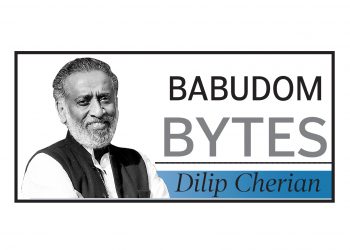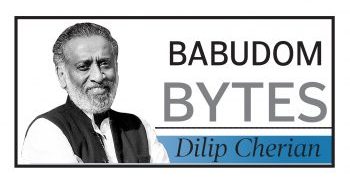There are fast moves in babudom bureaucracy, and then there is the Sujit Kumar story, which has impressed many in service circles. In just 51 days, Kumar went from Principal Commissioner in Delhi to BJP MLA from Gaura Bauram in Darbhanga, Bihar. Normally, such transitions take months of paperwork, clearances, and political negotiation. In this case, the timeline has raised more than a few eyebrows.
The sequence speaks for itself. On September 13, CBDT issued a promotion list that unusually included 20 IRS-IT officers of the 2001 batch at a level many of their IAS counterparts are still waiting to reach. Kumar was among them. Ten days later, he and others were given postings at their upgraded grade. On September 25, he applied for voluntary retirement. Instead of the standard three-month wait, Rashtrapati Bhavan cleared it in just 15 days. He joined the BJP on October 13, was named a candidate within 24 hours, filed his nomination the next day, went to the polls on November 6, and won on November 14.
What makes the speed more striking is the contrast with others who entered politics the hard way. Former IAS officer RK Singh, once a Union minister, was recently dismissed from the BJP for speaking out of turn. No such turbulence for Sujit Kumar, hopefully. His trajectory suggests not just careful planning, but powerful patrons ensuring the gears turned smoothly.
None of this means Kumar lacks merit. He is regarded as bright, ambitious, and politically aware. But few believe this chain of empanelment, VRS clearance, ticket allocation and electoral victory would have aligned without strong backing from Delhi.
Hints of a bigger reshuffle
Fresh off a decisive Bihar victory, the Modi government has signalled a sharp bureaucratic reset, one that goes far beyond routine reshuffling. The most telling move is the appointment of V. Srinivas as Rajasthan’s new Chief Secretary. A 1989-batch IAS officer with deep Central exposure, Srinivas wasn’t merely repatriated but strategically placed. His tenure as Union Secretary in Administrative Reforms, Pensions, and Grievances gave him a ringside view of the Centre’s governance playbook. Now he’s expected to bring that mindset into Jaipur’s secretariat.
What makes this move more intriguing is the timing and the tenure. Srinivas is due to retire in September 2026, which means he gets less than a year and a half in the hot seat unless the government grants an extension. That short runway strongly suggests a targeted mission: push through major administrative alignments, tighten state-Centre coordination, and ensure that Rajasthan’s bureaucracy operates in sync with national priorities. In other words: he’s not here for the scenery.
Meanwhile, his predecessor Sudhansh Pant has been pulled back to Delhi, parked briefly as Officer on Special Duty in the Cabinet Secretariat, before taking over as Secretary, Social Justice and Empowerment next year.
But beyond Jaipur, observers expect stirring happenings at the Centre. Several senior posts, including Petroleum & Natural Gas, Empowerment of Persons with Disabilities, remain vacant. Prime Minister Narendra Modi is clearly keeping key slots open while rebalancing the administration in line with political priorities.
So, this is a prelude. The real action, many in Delhi believe, is coming at the political level. With key Secretary posts at the Centre lying vacant and senior officers being quietly repositioned, the groundwork is being laid for something bigger. The chatter in power corridors is unmistakable: a Union Cabinet reshuffle may also not be far off. A few non-performing ministers could be shown the door, fresh faces may enter, and portfolios could see major realignment.
The IPS era in CAPFs is ending
For decades, India’s Central Armed Police Forces (CAPF) have lived with what many CAPF officers call, not entirely jokingly, the “IPS occupation”. The Supreme Court has now told them the withdrawal date (reported by this column). With the Court dismissing the Centre’s review plea, the May 2025 judgment ordering a phased reduction of IPS deputations has become irreversible. There’s even a timer: two years for the transition. No extensions, no polite ambiguity.
Today, half of all IG posts and one-fifth of DIG posts in CAPFs are reserved for IPS officers. That pipeline has shaped careers, morale, and internal hierarchies for decades. Countless CAPF officers have waited 30 years for a shot at an IG rank, only to watch a youngish IPS officer fly in, collect stars, and fly out.
Naturally, the IPS brotherhood is worried. Their argument, which the Home Ministry echoes, is that IPS leadership ensures “functional necessity, lateral talent infusion and national security coordination”. Fair enough. But that line rings hollow when CAPF officers themselves run modern counter-insurgency grids, manage lakhs of personnel in remote borders, and command units that look more like light infantry than civil police.
The Supreme Court wasn’t buying the security-doom argument either. It pointed out something obvious. Stagnation kills morale, and morale matters in forces tasked with guarding everything from Maoist belts to the Pakistan border. The judgment also did something quietly revolutionary. It said CAPFs must be treated as full Organised Group A Services for cadre matters. That’s babu code for “stop treating them like borrowed labour.”
One amusing data point in the government’s defence: IPS officers make up only 1.4% of the CAPF Group A executive cadre, but it’s this tiny segment sitting in the corner office that decides who gets promoted.
Will this dismantle IPS’ influence overnight? Unlikely. The turf war will now move into cadre review committees, service rule tinkering, and the bureaucratic trenches of North Block. But something big has shifted.
By Dilip Cherian






































